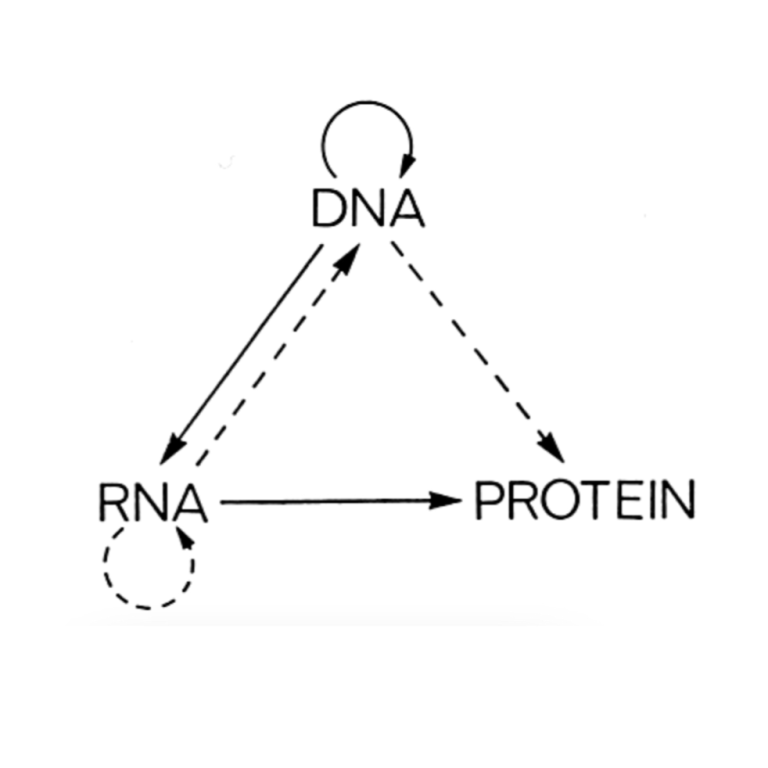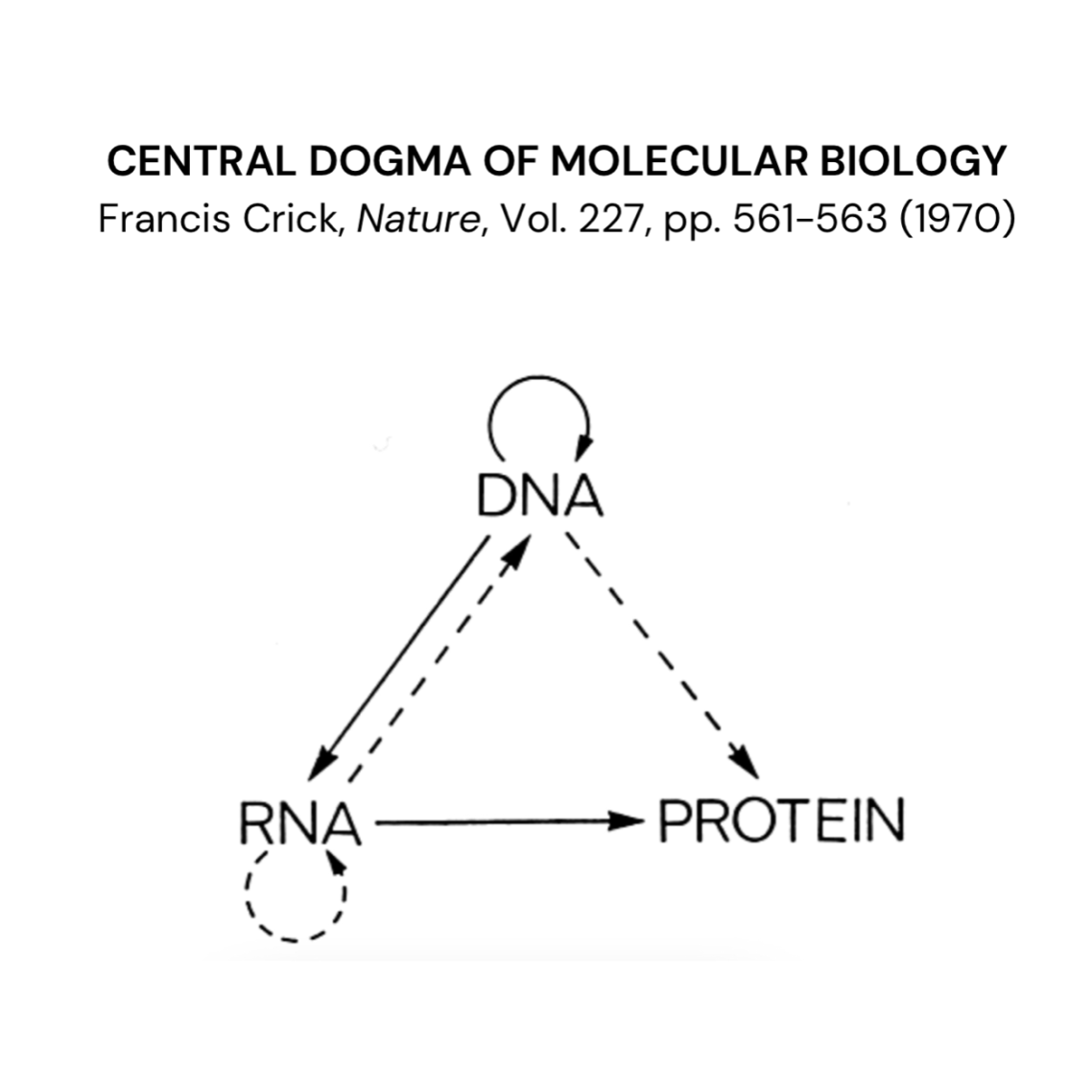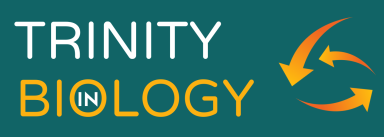
THE IMAGE
Of the Holy Trinity in the Cell
- Communication
- Plurality
- Three
- DNA, RNA, Protein
- Uni-directionality
- Origins
- Transcription
- Translation
- Loopy
Image of the Holy Trinity
It is highly ironic that the Holy Trinity has such a notorious reputation for being utterly incomprehensible, when the Trinity is such a simple linear structure. Either way, the finite character of the Holy Trinity's communication structure leads to the following profound consequence: it can exist within the natural world. This is known as an image of the Holy Trinity. One place where this occurs is within living cells. Here, instead of the divine nature, genetic information is communicated within a Trinitarian structure.

Nobody can see God and live (Exodus 33:20). Nevertheless, we can do the next best thing.
We can see the image of God in matter.
An Image is a
One-to-One
Correspondence

What's in a Name?
DNA, RNA and Protein
There is a peculiar pattern in the names of the three Persons of the Holy Trinity. The Father and the Son clearly have similar names based on the theme of family relations. But the Holy Spirit breaks this pattern - He is not the Grandson!
The reason why the Holy Spirit has a different type of name is because the Father and the Son have something crucial in common which is absent in the Holy Spirit: the Father and the Son communicate the divine nature, but the Holy Spirit doesn't. As the last person in the order of communication, the Holy Spirit only receives the divine nature, He never communicates it Himself.
We find exactly the same pattern of names within living cells. There is a set of three molecules, or more precisely, informational macromolecules because - unlike every other molecule known to exist - they communicate information. Their names are DNA, RNA and protein.
See the pattern? The Father and the Son have similar names, and so do DNA and RNA. And just as the Holy Spirit has a different name to the Father and the Son, so does protein with respect to DNA and RNA. This agreement is no accident of nature. DNA, RNA and protein have exactly the same communication structure as the Holy Trinity.
Father -> DNA
Just as the Father is the source of the divine nature in the Trinity, so DNA is the source of all genetic information within the cell. Also, the Father does not receive the divine nature from anyone else. Similarly, DNA does not receive genetic information from any other molecules within the cell.
Son -> RNA
The Son is not the source of his own divine nature, rather the Son receives his divine nature from the Father - it is communicated from the Father to the Son. Similarly, RNA does not store its own genetic information. RNA receives genetic information from DNA.
Holy Spirit -> Protein
The Son communicates the divine nature to the Holy Spirit and RNA communicates genetic information to proteins. So, DNA and RNA are like the Father and the Son because they communicate. While proteins are unmistakably like the Holy Spirit, because proteins cannot communicate - just like the Holy Spirit.
Recall...
- Father - Gives only
- Son - Gives and Receives
- Holy Spirit - Receives only
(The divine nature)
Now we find...
- DNA - Gives only
- RNA - Gives and Receives
- Protein - Receives only
(Genetic information)
Summary
Unlike the Holy Trinity, there are no limitations on the structure of a physical communication system. A molecular communication system can - in theory - consist of any number of molecules, and have any number of architectures. But the only which actually exists in nature, namely, DNA, RNA and protein, has exactly the same structure as the Holy Trinity.
6. The Central Dogma of Molecular Biology (Top)
I do not know which is more miraculous: DNA, RNA and protein having the structure of the Holy Trinity. Or, being Christened the Central Dogma of molecular biology, by the scientific community.
Dogma is a theological concept meaning an unquestionable truth. Since nothing in science is beyond question, dogmas per se, certainly do not exist in science. The fact that a world-renowned scientist could even think of calling a scientific discovery a "dogma" is one thing, for it to be accepted by the rest of the scientific community, and be accepted for publication in the most prestigious scientific journals such as Nature, is quite another. And yet this is precisely what happened when Francis Crick proposed the Central Dogma of molecular biology in 1958 and 1970. The wonder doesn't stop here either.
The Holy Trinity is not just any dogma in Christianity. Every other dogma in Christianity flows from the Holy Trinity. In other words, the Holy Trinity is the central dogma of Christianity.
The Central Dogma of molecular biology will go down in history as the most appropriately named discovery in the history of science. Precisely because it is the image of the central dogma of Christianity, the Holy Trinity. What makes this all the more powerful is the fact that Francis Crick was not a Christian, or even a believer, he was a complete atheist. So, who's been whispering in Crick's ear? There have been various attempts over the years to try and prove the Central Dogma wrong. None of these attempts have succeeded, nor will they ever. Because DNA, RNA and protein really were imprinted by the Holy Trinity. Let me show you why.
This explains...

The Central Dogma and the
Silence of the Holy Spirit (Top)
The Central Dogma of molecular biology states that when genetic information flows into proteins, it does not get out again. In other words, proteins only ever receive genetic information, they never on any occasion whatsoever, give or communicate it. Proteins are essentially silent.
Proteins are a molecular mirror-image of the Holy Trinity. As we have seen, the Holy Spirit only receives the divine nature, He never gives it. We can phrase this just like Crick's dogma by saying, "once the divine nature flows into the Holy Spirit, it never leaves". Because the Holy Spirit never communicates the divine nature, He is the silent divine person.
Resounding confirmation of this is found in the Bible: the Holy Spirit does not speak a single word anywhere in the Bible. The Father speaks throughout the Old Testament and a couple of times in the New Testament. The Son speaks (a lot) through the person of Jesus Christ. But the Holy Spirit never utters a single word.
The silence is deafening. So much so that the Apostles were even unaware of the Holy Spirit's existence: "No, we have not even heard that there is a Holy Spirit" (Acts of the Apostles 19:2).
This is the reason why no protein in the history of the universe has ever communicated genetic information.
The Flow of Genetic Information (Top)
DNA, RNA and protein have exactly the same uni-directional pattern of communication as the Holy Trinity. Just as the divine nature flows in one direction from the Father through the Son and finally into the Holy Spirit, so genetic information flows from DNA through RNA and into proteins.
Other lines of communication do exist in biology. However, these other communications by no means disprove the image of the Holy Trinity. Since unidirectional communication from DNA to RNA to protein is the foundation of biology.
Uni-directional communication is the most fundamental because of the fact that proteins are the molecular building-blocks of cells. Without this uni-directional communication, there would be no proteins and therefore no cells or organisms.
DNA replication is an example of a communication which does not exist in the Trinity. When cells multiply, the DNA needs to be copied, there is a DNA to DNA transfer, or replication of DNA.
This is necessary because clearly more than one cell exists in biology. In contrast, there is only one God, so there is no need for communication from Father to Father or divine replication.
DNA replication, therefore, does not contradict the image of the Holy Trinity. Rather it is an extension of it. It wouldn't exist without the image of the Holy Trinity embedded in DNA, RNA and protein.
Another example is reverse transcription in viruses where genetic information is communicated in the reverse direction from RNA to DNA. Again, this is no contradiction, it is an example of how biology builds on the divine image: viruses don't exist in eternity!
The Holy Trinity is
NOT A COMPUTER

© 2025 TRINITY in BIOLOGY • All rights reserved
We need your consent to load the translations
We use a third-party service to translate the website content that may collect data about your activity. Please review the details in the privacy policy and accept the service to view the translations.
